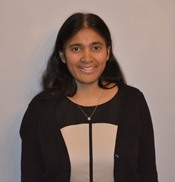Program Information
Catching Errors with Trajectory Log Files
K Wijesooriya*, K Seitter , V Desai , I Dharia , P Read , J Larner , University of Virginia Health Systems, Charlottesville, VA
Presentations
SU-E-T-158 (Sunday, July 12, 2015) 3:00 PM - 6:00 PM Room: Exhibit Hall
Purpose:
To present our single institution experience on catching errors with trajectory log file analysis. The reported causes of failures, probability of occurrences (O), severity of effects (S), and the probability of the failures to be undetected (D) could be added to guidelines of FMEA analysis.
Methods:
From March 2013 to March 2014, 19569 patient treatment fields/arcs were analyzed . This work includes checking all 131 treatment delivery parameters for all patients, all treatment sites and all treatment delivery fractions. TrueBeam trajectory log files for all treatment field types as well as all imaging types were accessed, read in every 20ms, and every control point (total of 37 million parameters) compared to the physician approved plan in the planning system.
Results:
Couch angle outlier occurrence: N= 327, range = -1.7 -1.2 deg; gantry angle outlier occurrence: N =59, range = 0.09 – 5.61 deg, collimator angle outlier occurrence: N = 13, range = -0.2 – 0.2 deg. VMAT cases have slightly larger variations in mechanical parameters. MLC: 3D single control point fields have a maximum deviation of 0.04 mm, 39 step and shoot IMRT cases have MLC -0.3 – 0.5 mm deviations, all (1286) VMAT cases have -0.9 – 0.7 mm deviations. Two possible serious errors were found: 1) A 4 cm isocenter shift for the PA beam of an AP-PA pair, under-dosing a portion of PTV by 25%. 2) Delivery with MLC leaves abutted behind the jaws as opposed to the midline as planned, leading to a under-dosing of a small volume of the PTV by 25%, by just the boost plan. Due to their error origin, neither of these errors could have been detected by pre-treatment verification.
Conclusion:
Performing Trajectory Log file analysis could catch typically undetected errors to avoid potentially adverse incidents.
Contact Email:


